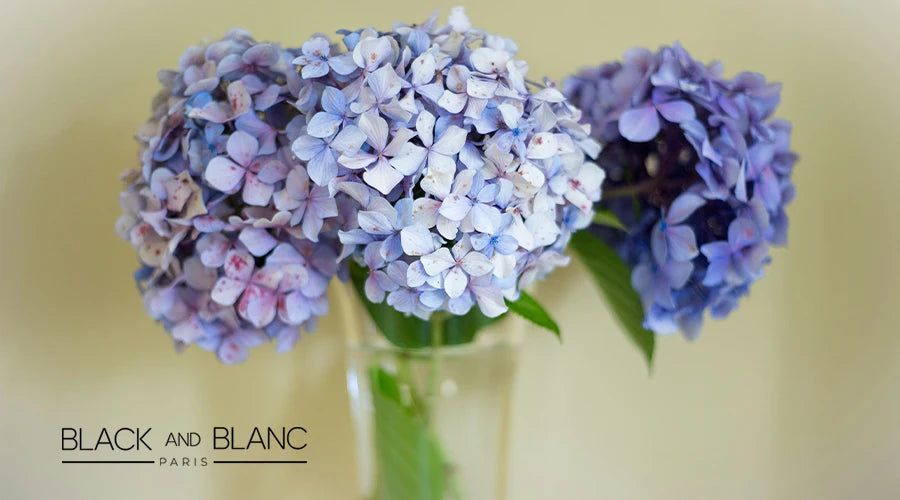Hydrangea Flower Maintenance
Hydrangeas captivate with lush blooms, blending beauty through an array of soft pastels to deep hues. In gardens, vases, or as centerpieces, their allure uplifts the spirit.
Sustaining the health and vibrancy of these splendid flowers demands routine care. This hydrangea flower maintenance guide details the key steps for your hydrangeas to flourish fully, adding breathtaking charm wherever enjoyed.
The Importance of Hydrangea Flowers
Hydrangeas have an honored role in horticulture, balancing beauty with deep cultural roots. For centuries, these magnificent blooms have enthralled gardeners, florists, and flower devotees, weaving into customs and commemorations.
Beyond looks, hydrangeas come in diverse colors, forms, and fragrances for all preferences. Varieties from delicate lace caps to vivid mopheads each share nature's craft, inviting admiration.
Whether as centerpieces, gifts, or garden adornments, hydrangeas uplift spirits and etch memories. Their irresistible charm has motivated countless artists, poets, and authors, securing their place as symbols of elegance.
Click here to view our luxury hydrangea flower collection.
Hydrangea Flower Care Instructions: Step-by-Step Guide
Step 1: Watering
Hydrangeas require ample water. In the heat, water weekly to keep the soil moist without becoming soggy. Adjust the schedule based on climate and soil.
Step 2: Light Requirements
Hydrangeas enjoy bright, filtered light. Direct sun can burn delicate blooms and leaves. Place plants in lightly shaded spots or use sheer curtains/blinds to diffuse harsh sunlight.
Step 3: Soil Preparation
Hydrangeas need soil that drains well, is slightly acidic, and is rich in organic content. Mix in compost, peat moss, or aged manure to craft the perfect conditions. Proper pH is also key to influencing the color of some varieties.
Step 4: Pruning
Pruning promotes vibrant growth and abundant blooms. Trim hydrangeas in late winter or early spring, removing dead or injured stems while shaping. Avoid pruning late summer as you may cut next year's buds.
Step 5: Fertilizing
Feed hydrangeas in early spring with a balanced, slow-release fertilizer as directed. Or apply diluted liquid fertilizer every 2-4 weeks during growth.
Step 6: Protecting from Frost
In cold areas, hydrangeas may need winter safeguarding. Insulate roots with a thick bark, leaf, or straw mulch. Wrap stems in burlap or shield plants under frost covers in harsh weather.
Step 7: Enjoying Cut Hydrangeas
Follow these steps to enjoy cut hydrangeas inside:
- Cut stems on a hydrated morning at an angle.
- Place in clean, lukewarm water right away.
- Strip submerged leaves.
- Change water every few days and recut stems for water absorption.
- Add a floral preservative to maximize their lifespan.

Troubleshooting: Dealing with Hydrangea Flower Issues
- Wilting Flowers: Hydrangeas can wilt, especially in heat and dryness. If blooms droop, soak the whole head in cool water for an hour to hydrate. Then, recut stems and refresh water to revive the flowers' look.
- Discolored Blooms: Brown or discolored blooms may result from sunburn, frost, or lacking nutrients. Provide the right light, water, and food to avoid spots and maintain vibrancy.
- Pests and Diseases: Watch hydrangeas closely since they can face issues like aphids, mites, mildew, or spots. Inspect regularly and act quickly if any problems appear. Get guidance from local experts on proper treatment tactics for safe resolution.
- Bud Drop: Buds may not bloom or drop too soon from stress like drastic temperature shifts, dryness, or severe pruning. Consistent conditions prevent the loss of flower potential.
Final Words; Hydrangea Flower Maintenance
Hydrangeas bring beautiful elegance. Follow the care guide for thriving blooms to enjoy years. Remember, they need frequent water and the right light conditions. Regular pruning, feeding, and protection aid their well-being.
Find pleasure in caring for these captivating flowers. Welcome the colors, textures, and scents they gift to your outdoor and indoor spaces. With some care and affection, your hydrangeas will prosper, spreading natural splendor and calm.
Hydrangea Flower Maintenance Frequently Asked Questions
How often should I water hydrangeas?
As water-loving plants, their soil should stay consistently moist, especially in warm weather. Water deeply once or twice weekly, adjusting based on climate and soil conditions.
When is the best time to prune hydrangeas?
For mophead and lacecap varieties, prune in late winter or early spring before new growth. For smooth hydrangeas, prune after flowering. Avoid pruning late summer to prevent removing next year's buds.
How can I protect my hydrangeas from frost?
In colder areas, hydrangeas may need extra winter cover. Mulch roots with bark, leaves, or straw for insulation. Also, wrap stems in burlap or use frost covers in extreme cold.
How do I dry hydrangea blooms for preservation?
Cut mature, slightly papery blooms and place in a vase with a bit of water. Let it evaporate over 2-3 weeks for natural drying while holding color and shape.
What is the best way to cut and display fresh hydrangeas?
Cut stems in the morning when hydrated. Trim at an angle into clean, lukewarm water. Remove submerged leaves and change water every few days. A preservative extends a vase's life.
How long do cut hydrangeas last?
With care like cool temperatures away from sun and drafts, changing water regularly, cut hydrangeas can last 7-10 days or more.





